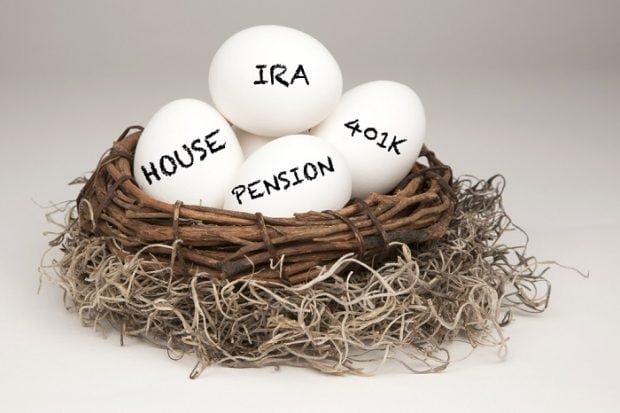 EBRI said it's important for databases to be able to link separate accounts owned by the same individual within and across providers to determine the potential total retirement savings amount. (Photo: Shutterstock)
EBRI said it's important for databases to be able to link separate accounts owned by the same individual within and across providers to determine the potential total retirement savings amount. (Photo: Shutterstock)
A recent study by the Employee Benefit Research Institute examines whether required minimum distribution rules are a significant factor in IRA withdrawals, and suggests that they are.
Related: 10 things to know about RMDs
“EBRI's findings for 2016 contain information on over 24.2 million accounts owned by some 19.1 million individuals with total assets of $2.36 trillion,” Craig Copeland, EBRI senior research associate and author of the IRA report, said in a statement.
“The report shows that in 2016, 22.7% of those ages 71 or older were found to have traditional IRA withdrawals in excess of their required minimum distributions, meaning that over three-quarters took only the amount they were required to take.”
Among IRA owners who took withdrawals in excess of their RMD, 49.3% had balances less than $5,000. The percentage of account holders with withdrawals trended downward, to 25.1% for those with account balances of $10,000 to $24,999, to 21.1% for those with balances of $150,000 to $249,999 and to 18.2% for those with balances of $250,000 or more.
EBRI said that the median withdrawal rates in 2016, the latest year for which data were available, suggested that many individuals may be able to depend on the IRA as a continuing source of income throughout retirement. It noted, however, that further research would be needed to determine whether those individuals maintained the same withdrawal rates over longer time frames.
The RMD rules apply only to traditional IRA owners, who are required to make an annual minimum distribution beginning in the year they turn age 70 ½. The RMD rules do not apply to Roth IRA owners.
As a result, only 6.2% of Roth IRA owners ages 71 to 79 in the EBRI study took a withdrawal in 2016.
EBRI's analysis showed that the average IRA account balance in the database was $97,515 in December 2016, and the average IRA individual balance (when all accounts owned by the individual were combined) was $123,973. This amounted to a 27% larger balance when all of an individual's accounts were considered.
EBRI said these findings showed the importance of databases being able to link separate accounts owned by the same individual within and across data providers in order to determine the potential total retirement savings the individual has by aggregating their multiple IRA accounts.
Other key findings
In 2016, Roth IRAs had the lowest average balance, while traditional IRAs had the highest average balances.
Rollovers to IRAs, regardless of the source, were some 16 times higher than the total contributions in the database. The average rollover to a Traditional IRA was $94,238, and the median rollover was $21,383.
About one-tenth of all accounts in the database received a contribution in 2016, but Roth IRAs were more than four times likelier to receive a contribution than traditional IRAs.
In 2016, 27.1% of traditional IRA owners took a withdrawal, compared with 4.6% of Roth IRA owners.
The research showed that 50.9% of IRA assets were allocated to equities in 2016, although this varied with the owner's age, account balance and IRA type. In addition, 13.2% were in balanced funds, 14.7% in bonds, 11.1% in money and 10.1% in other assets.
When the equity share of balanced funds were combined with the equity allocation, the total equity exposure of IRA owners was 58.8% of the assets.
Traditional IRAs owners had, on average, lower allocations to equities. In addition, equity allocations peaked for both traditional and Roth IRA owners at ages 45 to 54. IRAs with the biggest and smallest balances had the lowest combined exposure to equities (including the equity share of balanced funds).
Overall in 2016, 28.6% of IRAs had less than 10% in equities, and 26.6% had more than 90% in equities — so-called extreme allocations in a particular asset category.
EBRI said the sizable percentage of IRA owners with extreme allocations showed that there was room for improvement in allocation behavior of IRA owners to reach a better diversification of assets.
Twenty-three percent of IRAs had more than 90% of their assets in bonds and money.
© 2025 ALM Global, LLC, All Rights Reserved. Request academic re-use from www.copyright.com. All other uses, submit a request to [email protected]. For more information visit Asset & Logo Licensing.







